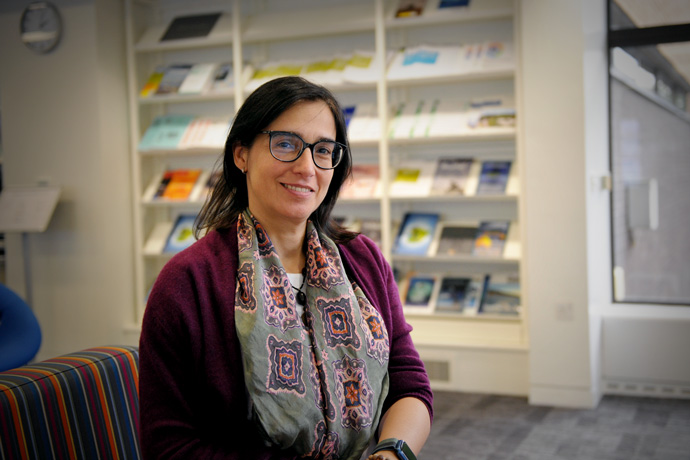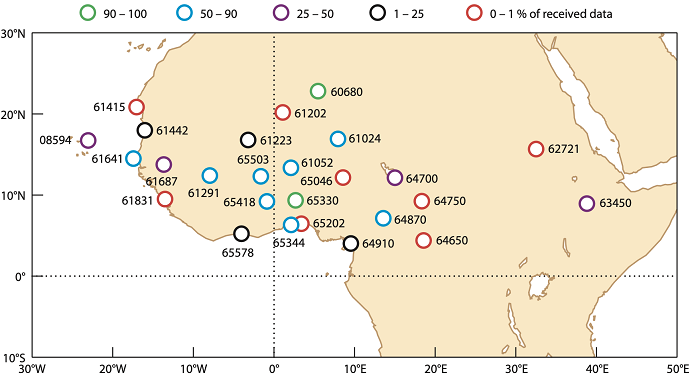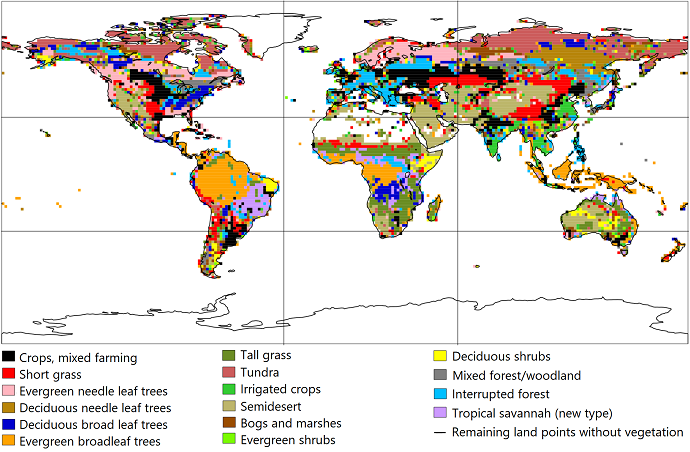

Anna Agustí-Panareda has spent the last few years modelling greenhouse gases in ECMWF’s Integrated Forecasting System (IFS) and is a key expert on the topic. She now helps to develop a system to monitor anthropogenic emissions of these gases.
Anna studied computational physics at the University of Edinburgh in Scotland. “I chose physics because I wanted to understand the fundamentals of how things work. Computational physics is a branch of physics where experiments are done using simulations, and I liked that,” she says.
During the last year of her four-year course, she took a unit in atmospheric physics. “The application of physics to the atmosphere was a discovery for me, which I then followed up,” she says. She did an MRes research course in meteorology, also in Edinburgh, followed by participating in a project on reconstructing climate records for mountain lake research in the geophysics department.
“I really liked research work, but then I realised that jobs involving research require a PhD, so I decided to do one in meteorology at the University of Reading in England,” Anna says. “I chose a topic that looked very interesting: the extratropical transition of tropical cyclones. It was not well understood at the time.”

Anna worked on the role of tropical cyclones in the development of weather systems in the mid-latitudes using potential vorticity (PV). The schematic shows PV anomalies and other anomalies in the extratropical transition process. (1) refers to a surface thermal anomaly; (2), (3) and (4) to positive PV anomalies; and (5) to a negative PV anomaly associated with the tropical cyclone’s outflow. (Adapted from an image in an article Anna et al. published in 2004 in the Quarterly Journal of the Royal Meteorological Society, https://doi.org/10.1256/qj.02.140.)
Having completed the PhD successfully, she did three years of postdoctoral work in Reading on pollution transport in the troposphere. Anna then joined ECMWF in 2006, originally to work on an EU project on the West African monsoon called AMMA.
African field campaign
Anna supported a field campaign as part of AMMA. “That looked ideal because the West African monsoon is also very important for the genesis of tropical cyclones in the Atlantic, which I had already worked on.”
Tropical cyclones originating from Africa form in easterly waves, which grow from instabilities in the jet. The jet is formed because of a temperature gradient between the tropical region and the desert in the region of the Sahel. “There are a lot of physical processes interacting with the dynamics to produce precipitation during the monsoon,” she says. “The precipitation from the West African monsoon is very important for the rain-fed crops in the Sahel.”
The project was organising a field campaign, called an intensive observation period, and ECMWF sought to assimilate those observations into its analyses used to initialise weather forecasts. “Some observations arrived in time for this purpose. For others, I did a special reanalysis of weather conditions for this period. To get a positive impact from those observations, it was important to remove systematic errors from them.”

Radiosonde stations monitored in the AMMA project in August 2006 with the relevant station ID. Colours indicate the percentage of data, in this case 700 hPa temperatures from 00 and 12 UTC soundings, received at ECMWF.
Atmospheric composition
The EU project Anna participated in was only temporary. Three years later, she obtained a position at ECMWF as part of a team working on the monitoring and forecasting of atmospheric composition.
Specifically, she was to work on the carbon cycle. “I first had to do some reading up on this to be up to date,” she says. “I’m really glad I got this job because the carbon cycle is a fascinating topic.”
She points out that it is very multi-disciplinary: it is important for meteorology, it affects climate change, and it is also linked to the land surface, which Anna had already worked on in her previous project.
She considered how vegetation contributes to the carbon cycle, and more generally she worked on various aspects associated with the modelling of the carbon cycle in the IFS. This required working closely with ECMWF’s land surface scientists and experts on vegetation modelling from other institutes, as well as colleagues working on numerical and physical aspects of tracer transport, and the atmospheric composition team at large.
Since 2014, ECMWF has been running the EU-funded Copernicus Atmosphere Monitoring Service (CAMS), which provides information related to air pollution and health, solar energy, greenhouse gases and climate forcing across the world. “I coupled the photosynthesis module and the soil module to the forecasting system ECMWF was developing for CAMS,” Anna says.

Maps of dominant vegetation type such as this are used in the CAMS atmospheric composition forecast to bias-correct the biogenic CO2 fluxes modelled in the IFS. (Adapted from an article by Anna et al. published in Atmospheric Chemistry and Physics in 2016, https://doi.org/10.5194/acp-16-10399-2016, CC 3.0.)
Towards monitoring anthropogenic emissions
Traditionally, the human contribution to the carbon cycle – for example through farming, energy production, industry, heating, and transport – has been incorporated in the IFS, for the analysis and forecast of atmospheric composition, as a prescribed set of emissions, updated on a yearly basis.
This is to change with the development of an operational anthropogenic greenhouse gas emissions Monitoring and Verification Support Capacity (CO2MVS), to be run by CAMS from 2026. The ultimate goal is to support climate change mitigation efforts, such as the Paris Agreement.
It started in 2017 with a first project called CHE (CO2 Human Emissions), followed by CoCO2 (Copernicus CO2 service), CORSO (CO2MVS Research on Supplementary Observations), and CATRINE (Carbon Atmospheric Tracer Research to Improve Numerical schemes and Evaluation).
CO2MVS will derive human-caused emissions of carbon dioxide (CO2) and methane (CH4) from atmospheric observations across the world.
Anna was involved in the projects preparing the ground for CO2MVS from the beginning. “I contributed to the writing of the proposals for CHE and CoCO2, and I was in charge of the work package on the integration of the results for the design of the prototype in the CHE project and its implementation within the IFS in the CoCO2 project.”
She is also one of the coordinators of the CATRINE project. CATRINE is looking in detail at one of the topics that is still being investigated: the modelling of the atmospheric transport of tracers, with an emphasis on long-lived greenhouse gases.
“Unless we tackle the problem of transport accuracy, we won’t be able to trust our emission estimation results,” Anna says. “It’s a relatively small project, but it’s important for the future of the CO2MVS.”

This is a nature run of CO2 in 2021, using ECMWF’s weather forecasts, which was produced as part of a library of simulations in the CHE and CoCO2 projects. In such a nature run, the CO2 evolves from realistic starting conditions and is subject to sub-daily updates of emissions and sinks as well as weather conditions, but it does not include any input from observations of CO2. The amount of CO2 in the atmosphere depends very much on the time of day and the season, and it also increases noticeably throughout the year: more is present at the end of 2021 than at the beginning.
